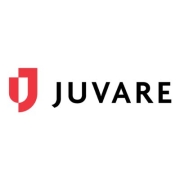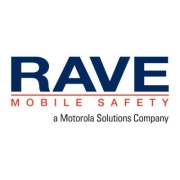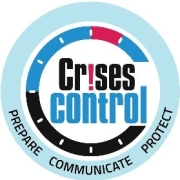Critical Event Management (CEM) solutions help organizations prepare for, respond to, and recover from disruptions, ensuring continuous operations and safety.
The top 5 Critical Event Management (CEM) solutions are PagerDuty Operations Cloud, OnSolve Platform for Critical Event Management, Everbridge Crisis Management, Blackberry AtHoc and AlertMedia, as ranked by PeerSpot users in March 2025. PagerDuty Operations Cloud received the highest rating of 8.5 among the leaders and is the most popular solution in terms of searches by peers, and Everbridge Crisis Management holds the largest mind share of 12.0%.
Used by businesses to manage risk, CEM solutions integrate real-time data, communications, and coordination capabilities. This enables optimized response times and ensures the safety of people and assets during emergencies. With intuitive dashboards and automated workflows, these solutions offer a comprehensive approach to crisis management.
What are the key features of CEM solutions?CEM solutions find applications across multiple industries, including healthcare, manufacturing, and finance. In healthcare, these tools can coordinate responses to medical emergencies. Manufacturing facilities use CEM to manage operational disruptions. Financial institutions rely on CEM for crisis communication and disaster recovery.
Organizations benefit from these solutions because they help mitigate risks and ensure business continuity, making operations more resilient against unexpected events.





























Critical Event Management (CEM) refers to the process of identifying, assessing, and responding to critical events that may impact an organization's operations, reputation, or safety. These events can range from natural disasters and cyber-attacks to workplace accidents and public health emergencies. To effectively manage these events, organizations employ various types of CEM strategies and tools. Here are some of the different types of Critical Event Management:
1. Emergency Response Management: This type of CEM focuses on immediate response and coordination during emergencies such as natural disasters, fires, or terrorist attacks. It involves establishing emergency protocols, communication systems, and evacuation plans to ensure the safety of employees and stakeholders.
2. Business Continuity Management: Business continuity management aims to minimize disruptions and maintain essential operations during and after a critical event. It involves developing strategies, processes, and resources to ensure the organization can continue functioning despite the event's impact. This may include backup systems, alternate work locations, and recovery plans.
3. Crisis Communication Management: Crisis communication management focuses on effectively communicating with internal and external stakeholders during a critical event. It involves developing communication plans, establishing spokespersons, and utilizing various channels to provide timely and accurate information. This type of CEM helps maintain trust, manage reputation, and mitigate the potential damage caused by the event.
4. IT Incident Management: IT incident management focuses on identifying, analyzing, and resolving critical IT incidents that may disrupt business operations. It involves establishing incident response teams, incident reporting systems, and recovery processes to minimize the impact of cyber-attacks, system failures, or data breaches.
5. Supply Chain Risk Management: Supply chain risk management aims to identify and mitigate risks within the organization's supply chain. It involves assessing vulnerabilities, establishing contingency plans, and building relationships with alternative suppliers to ensure the continuity of the supply chain during critical events such as supplier bankruptcies, transportation disruptions, or geopolitical crises.
6. Public Health Emergency Management: This type of CEM focuses on managing public health emergencies such as pandemics, disease outbreaks, or bioterrorism threats. It involves developing response plans, coordinating with public health agencies, and implementing measures to protect employees, customers, and the community.
Critical Event Management is a comprehensive approach to managing and responding to critical events that may impact an organization's operations, reputation, or safety. It involves the use of technology and processes to quickly identify, assess, and respond to these events in a coordinated and efficient manner. CEM provides numerous benefits to organizations, including:
1. Rapid incident detection: CEM solutions leverage real-time data from various sources, such as social media, news feeds, and sensors, to quickly identify critical events as they unfold. This enables organizations to respond promptly and mitigate potential risks.
2. Enhanced situational awareness: By aggregating and analyzing data from multiple sources, CEM platforms provide organizations with a comprehensive view of the situation. This allows decision-makers to understand the full scope and impact of an event, enabling them to make informed decisions and allocate resources effectively.
3. Streamlined communication and collaboration: CEM platforms facilitate seamless communication and collaboration among stakeholders, both within and outside the organization. This ensures that the right people are notified promptly, enabling a coordinated response and reducing response times.
4. Automated workflows and processes: CEM solutions automate various workflows and processes, such as incident escalation, task assignment, and status tracking. This eliminates manual errors, reduces response times, and ensures that critical tasks are completed in a timely manner.
5. Improved resource management: CEM platforms enable organizations to efficiently allocate and manage resources during critical events. By having real-time visibility into resource availability and utilization, organizations can optimize their response efforts and ensure that resources are deployed where they are most needed.
6. Proactive risk management: CEM solutions enable organizations to proactively identify and mitigate potential risks before they escalate into critical events. By monitoring various data sources and analyzing historical data, organizations can identify patterns and trends, allowing them to take preventive measures and minimize the impact of future events.
7. Compliance and reporting: CEM platforms provide organizations with the ability to track and document their response efforts, ensuring compliance with regulatory requirements. They also generate comprehensive reports and analytics, which can be used for post-incident analysis, continuous improvement, and regulatory audits.
Critical Event Management is a comprehensive approach to managing critical events and ensuring effective response and recovery. It involves the use of advanced technology and streamlined processes to enable organizations to quickly and efficiently respond to and mitigate the impact of critical events. Here is an overview of what CEM solutions can do:
1. Event Detection
2. Alerting and Notifications
3. Situation Assessment
4. Communication and Collaboration
5. Incident Management
6. Resource Management
7. Business Continuity and Recovery
8. Reporting and Analysis